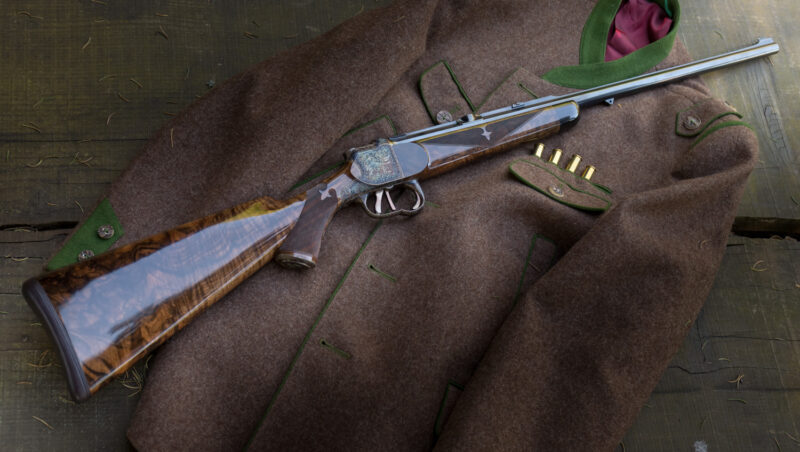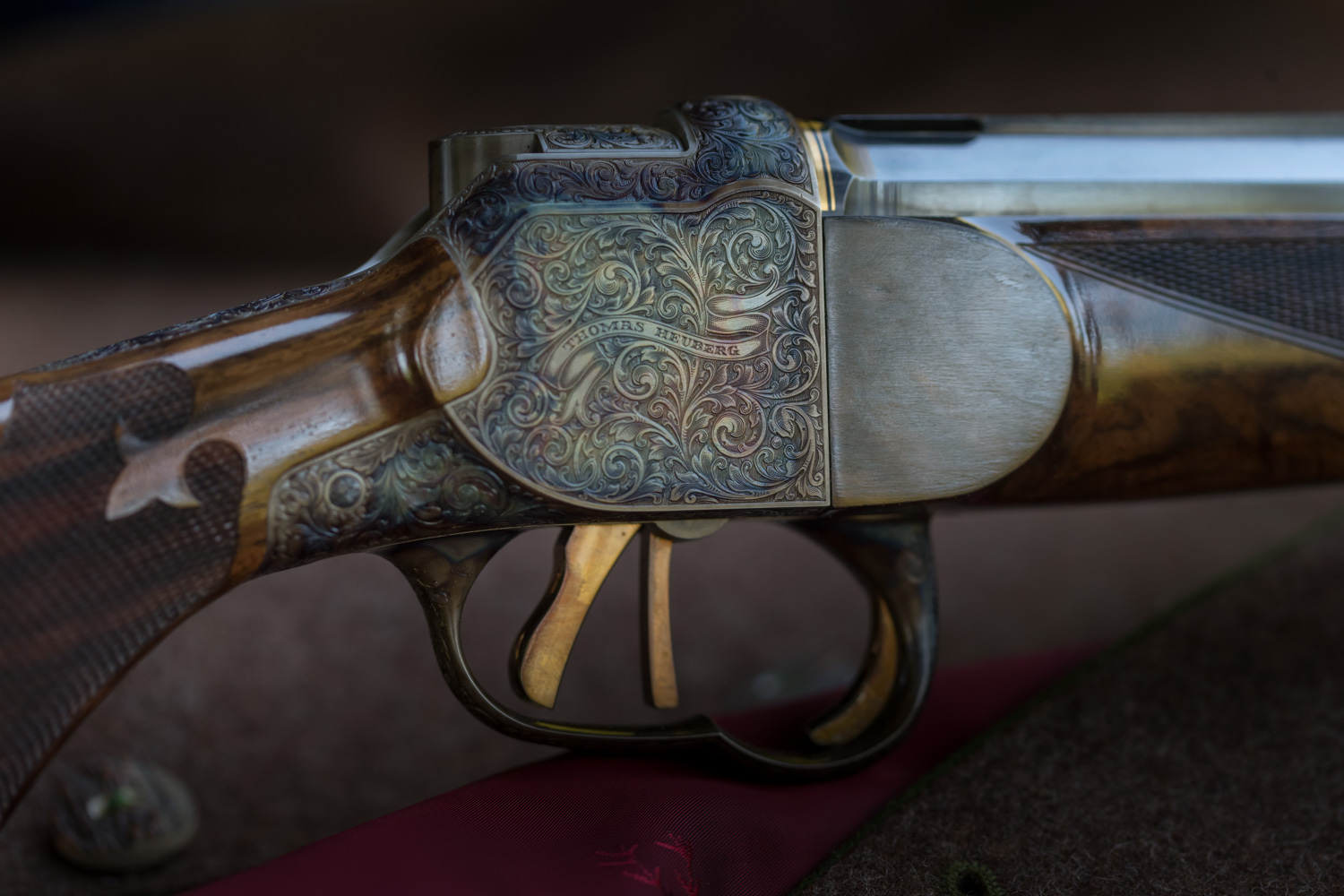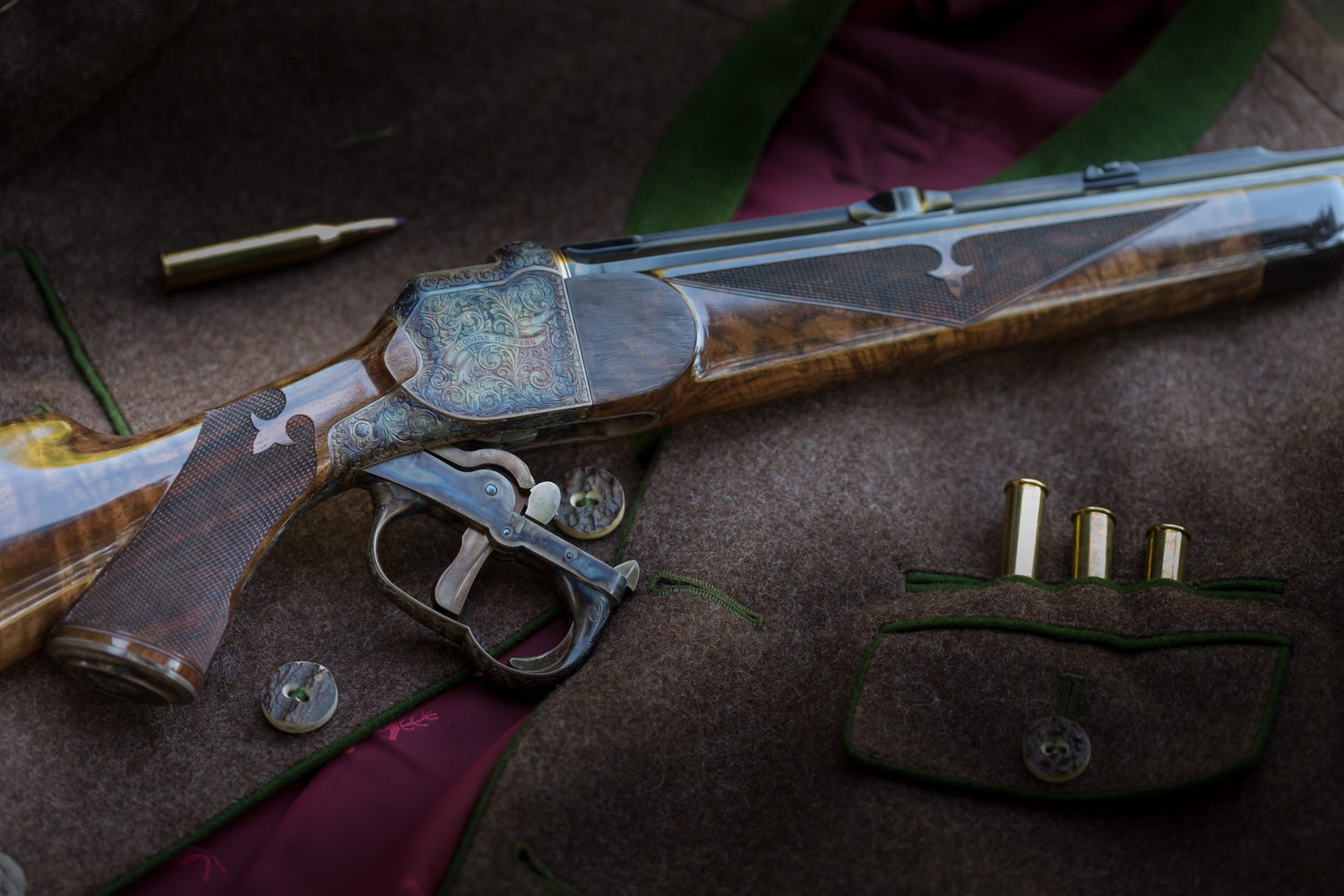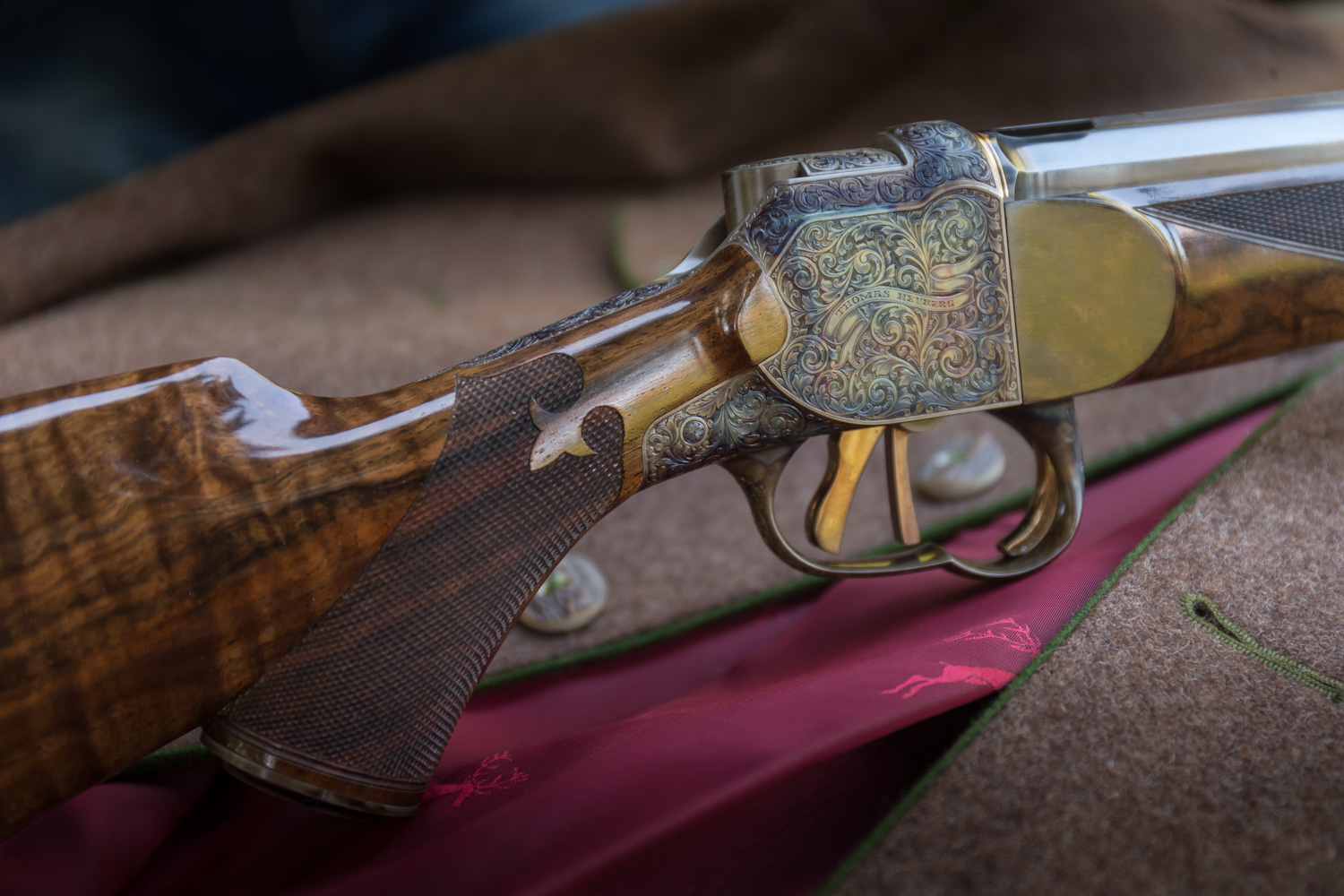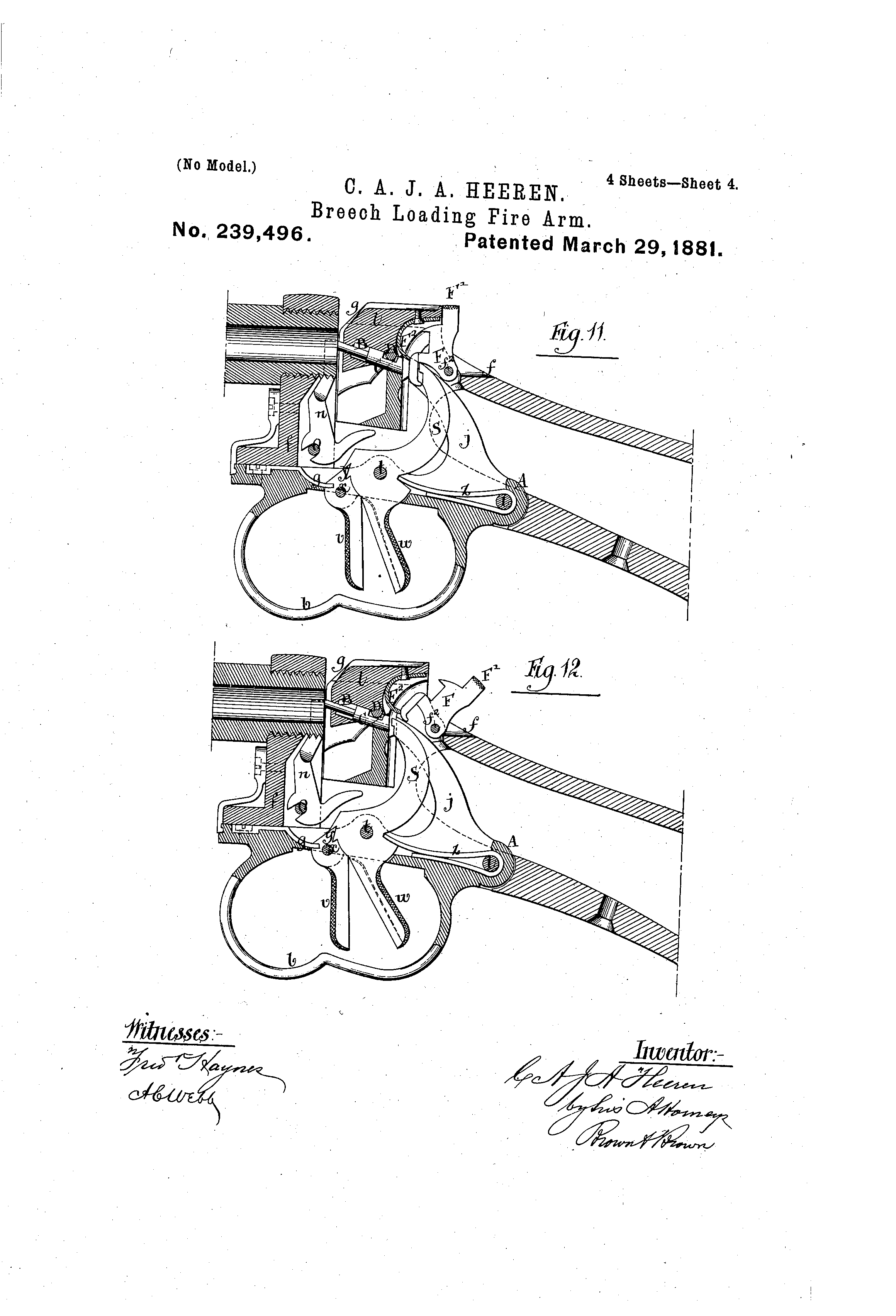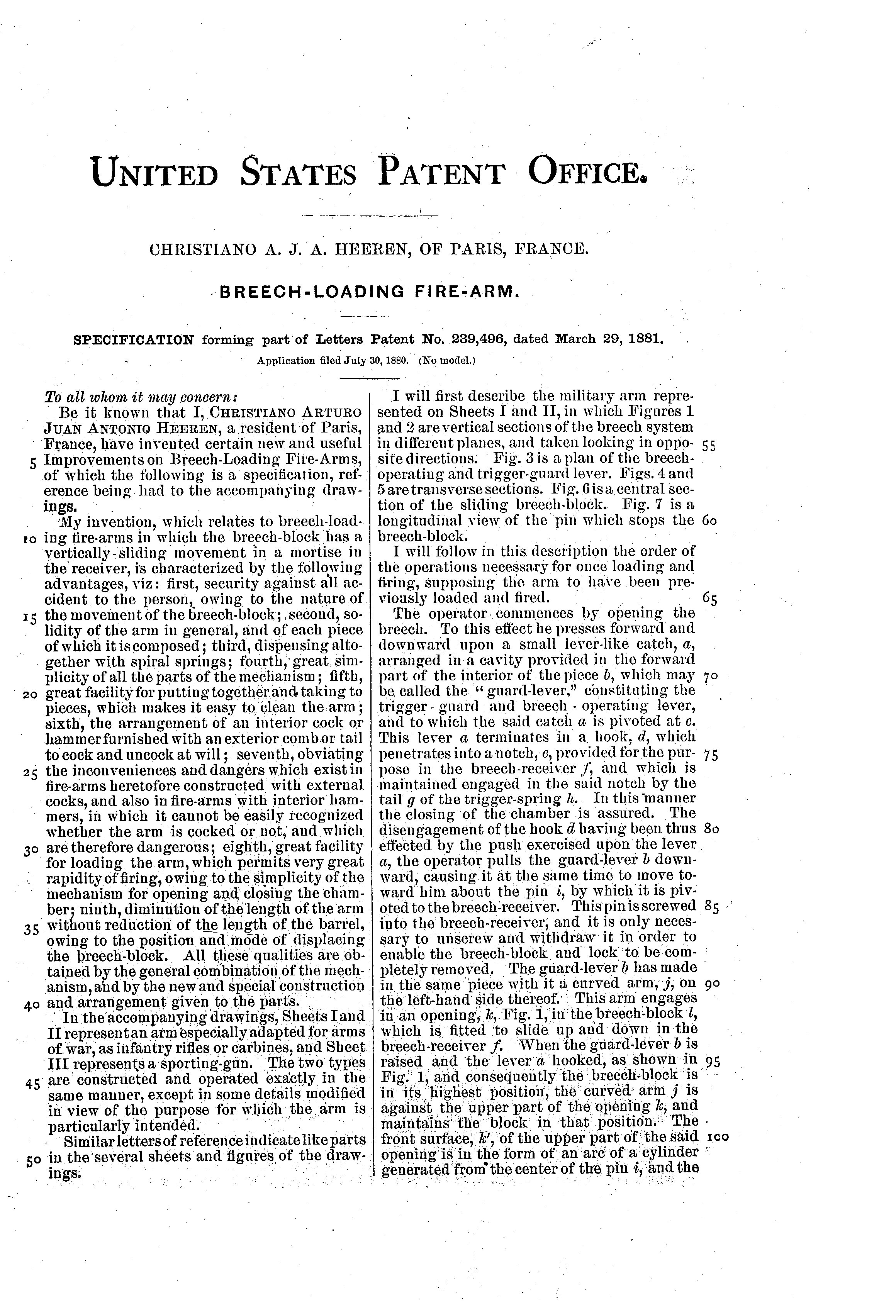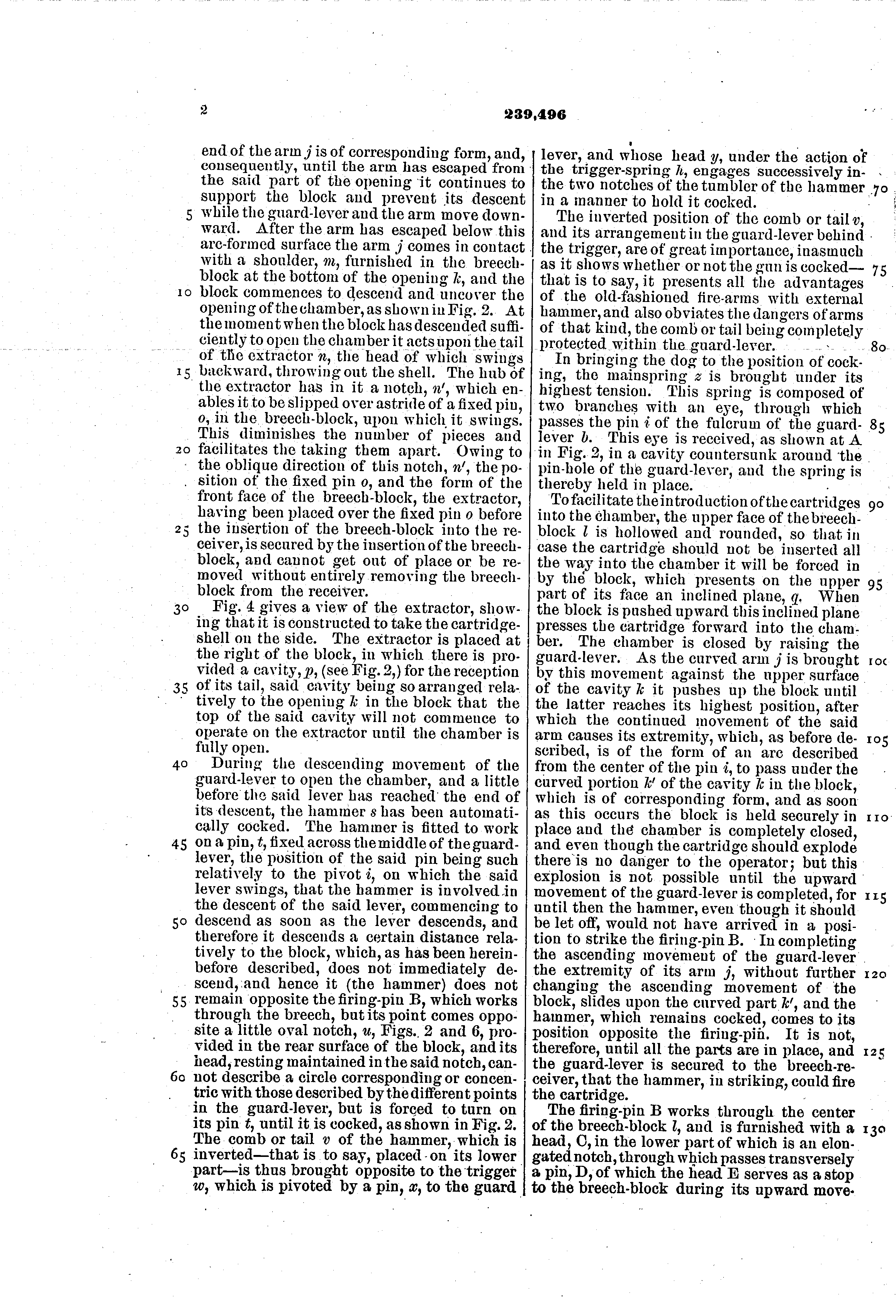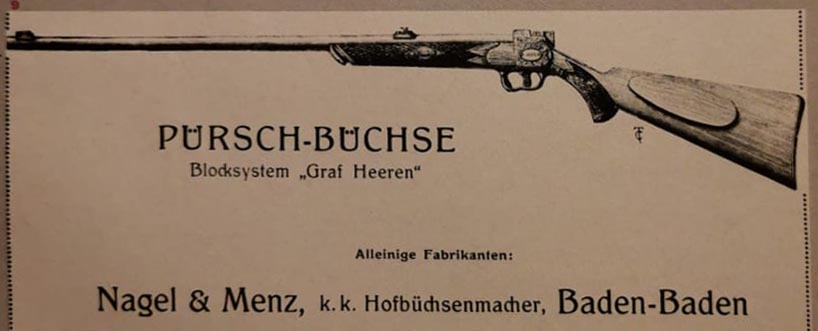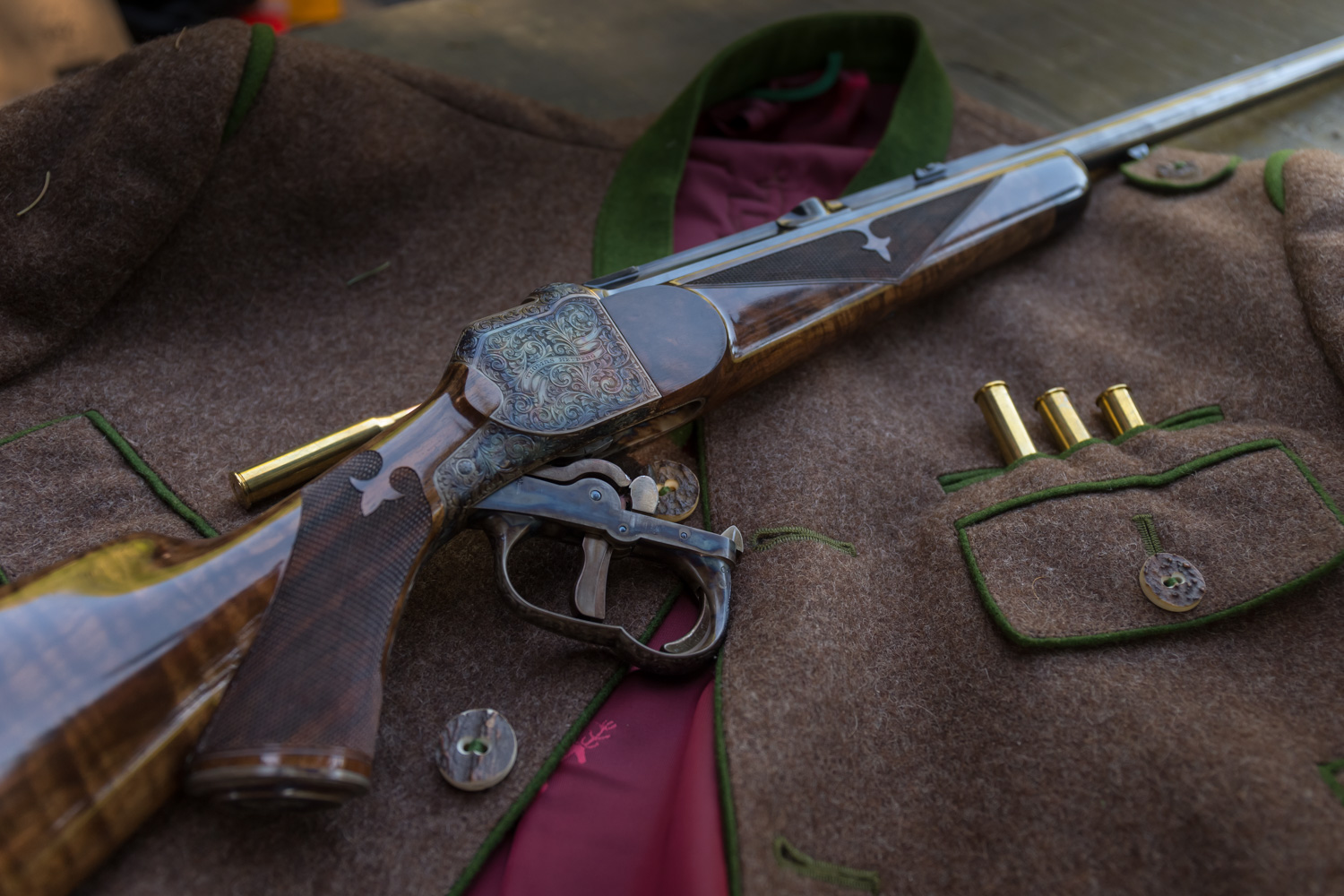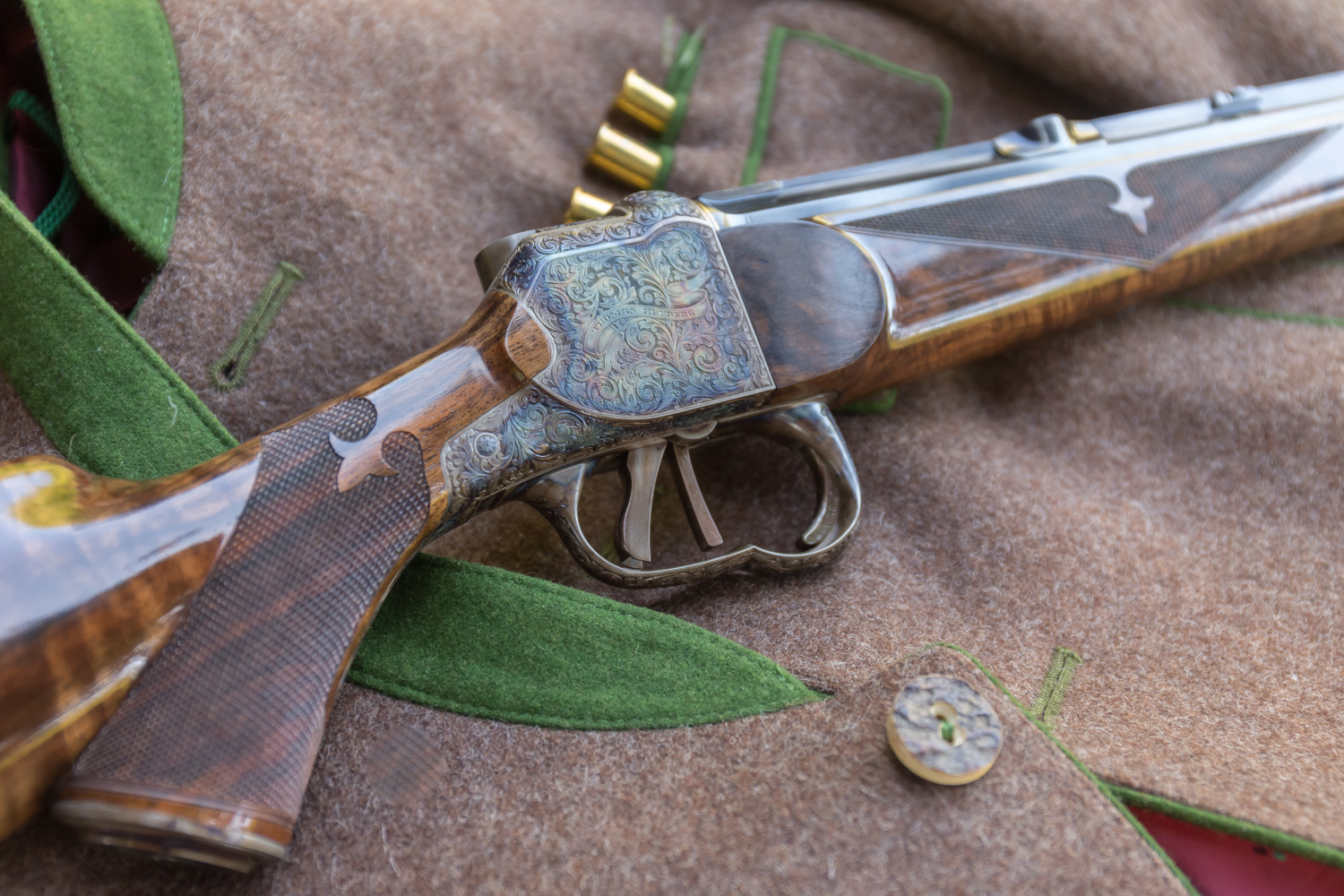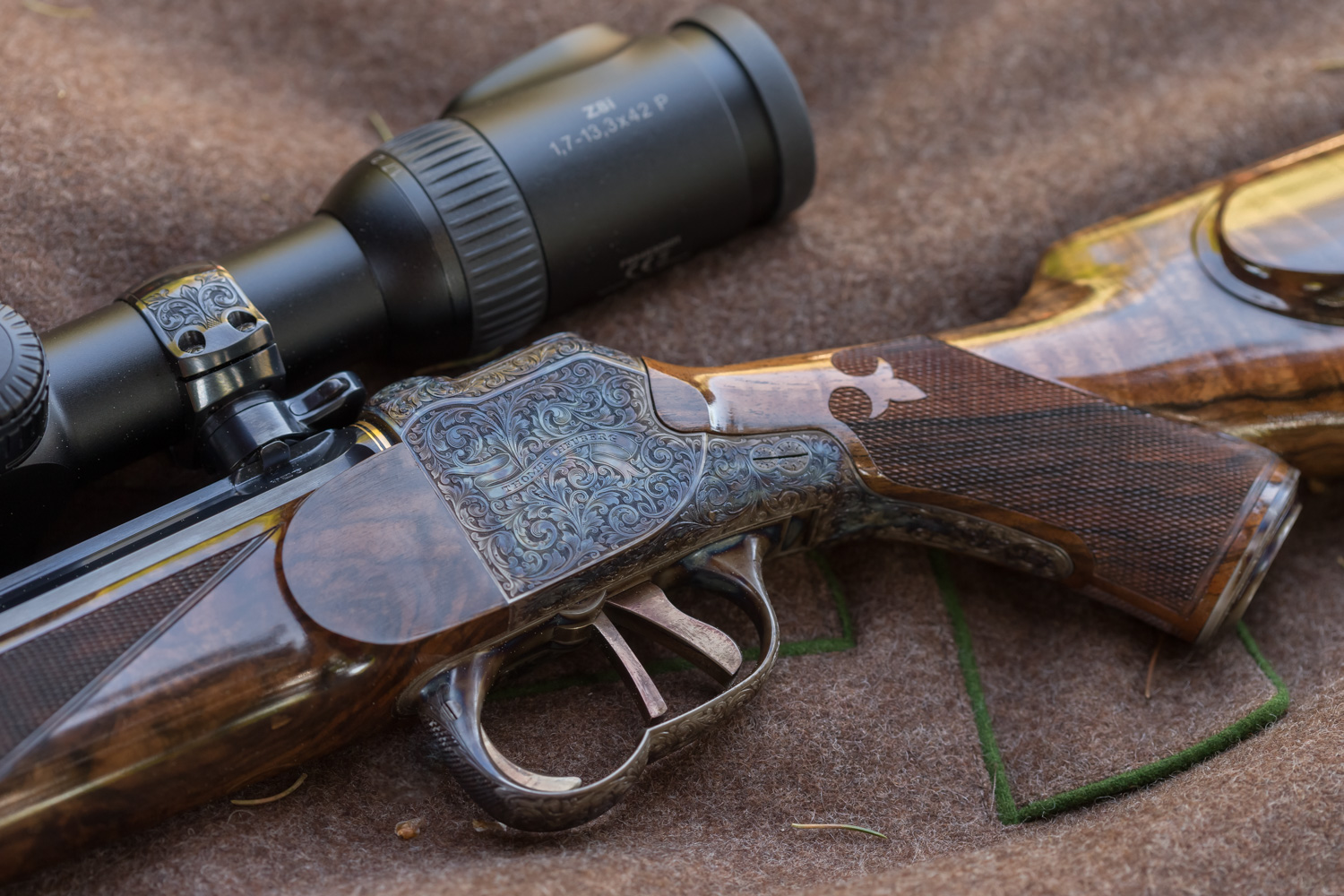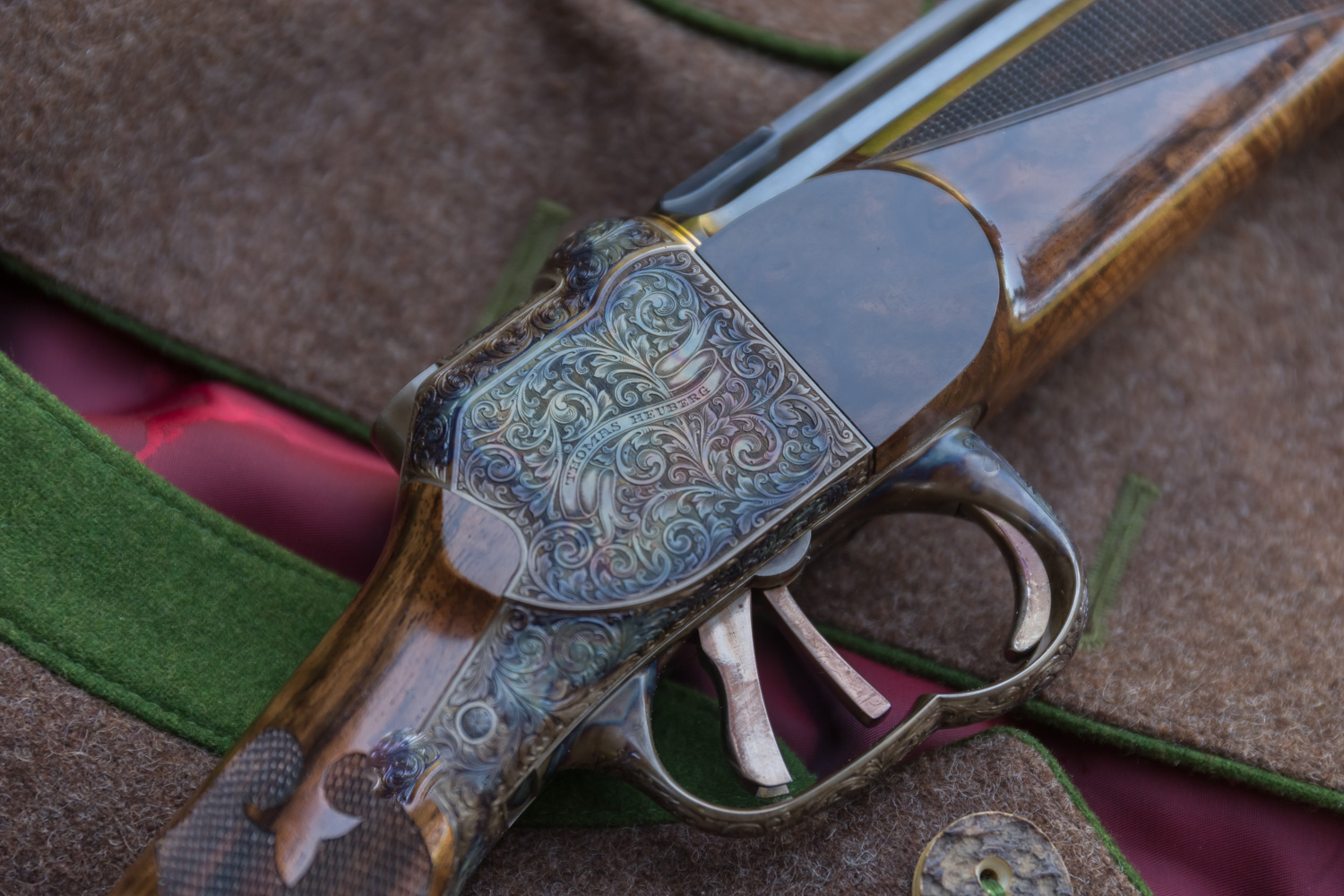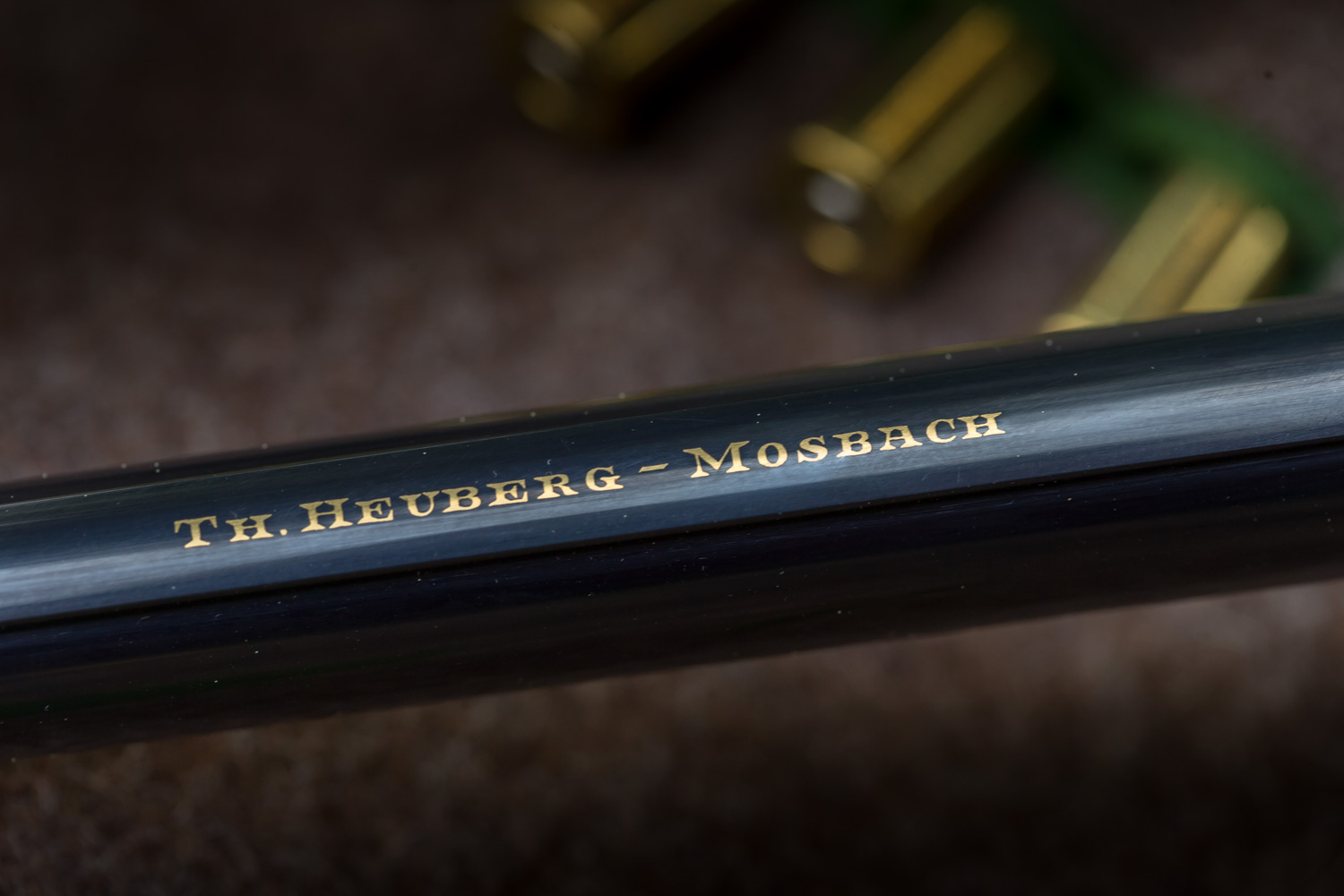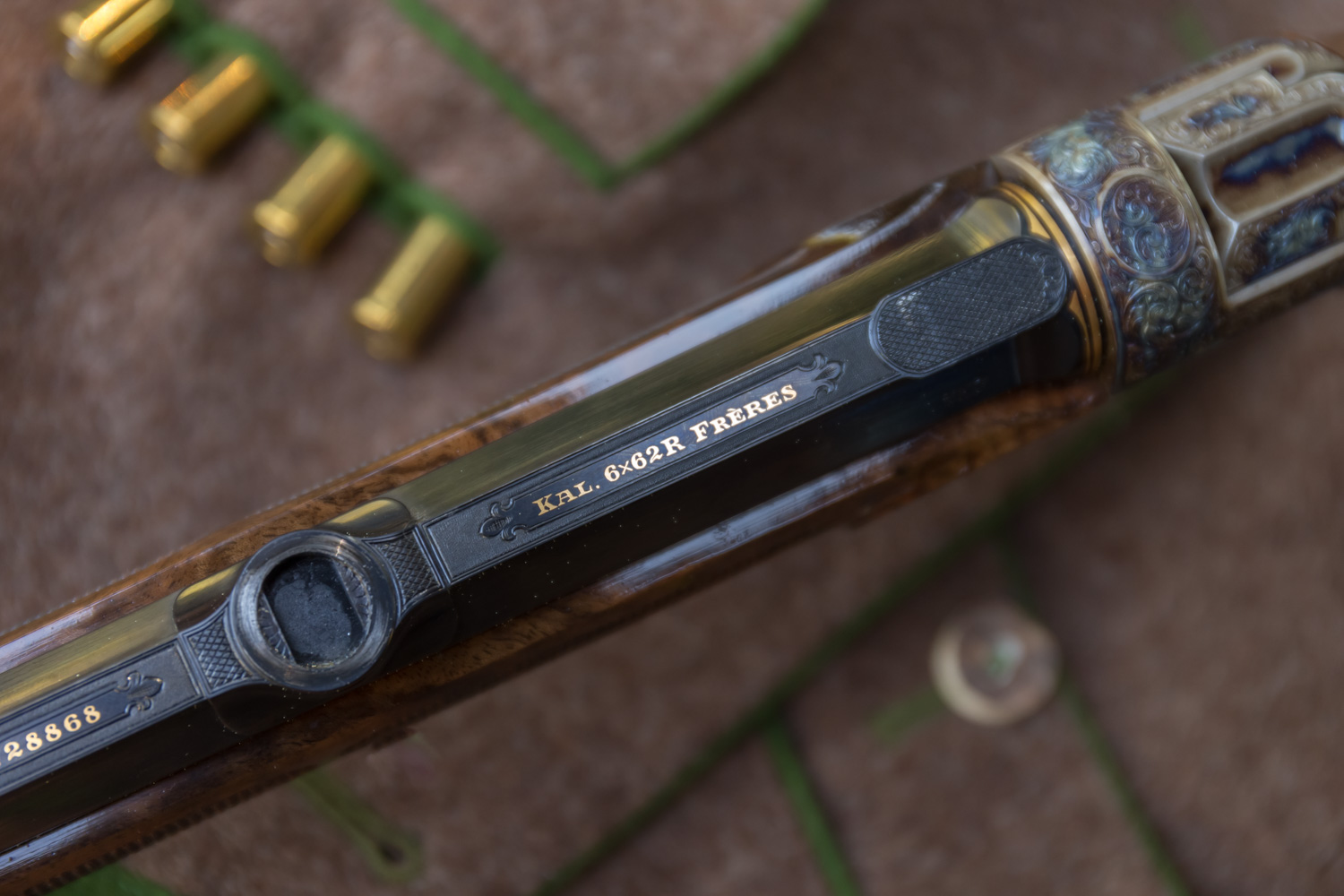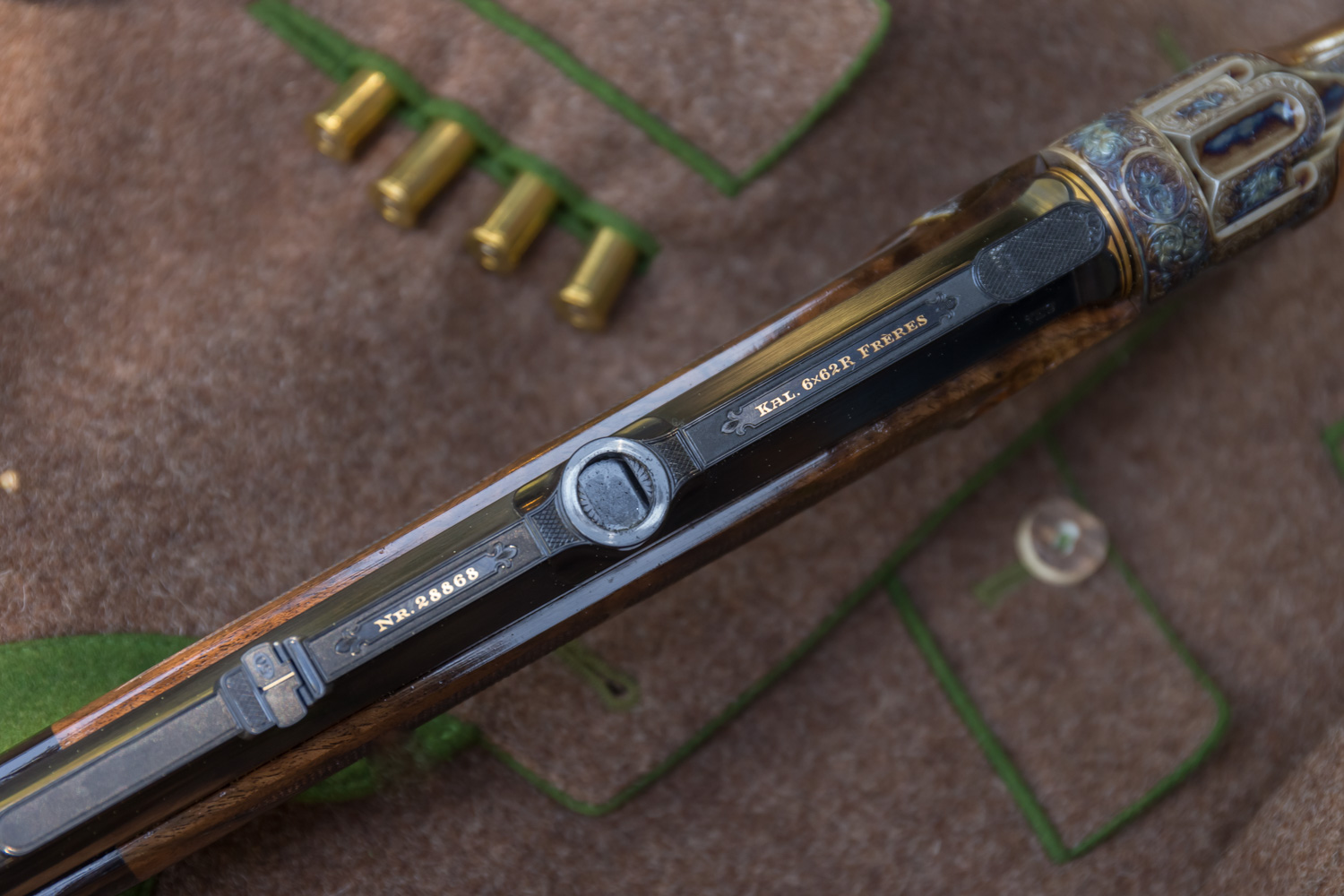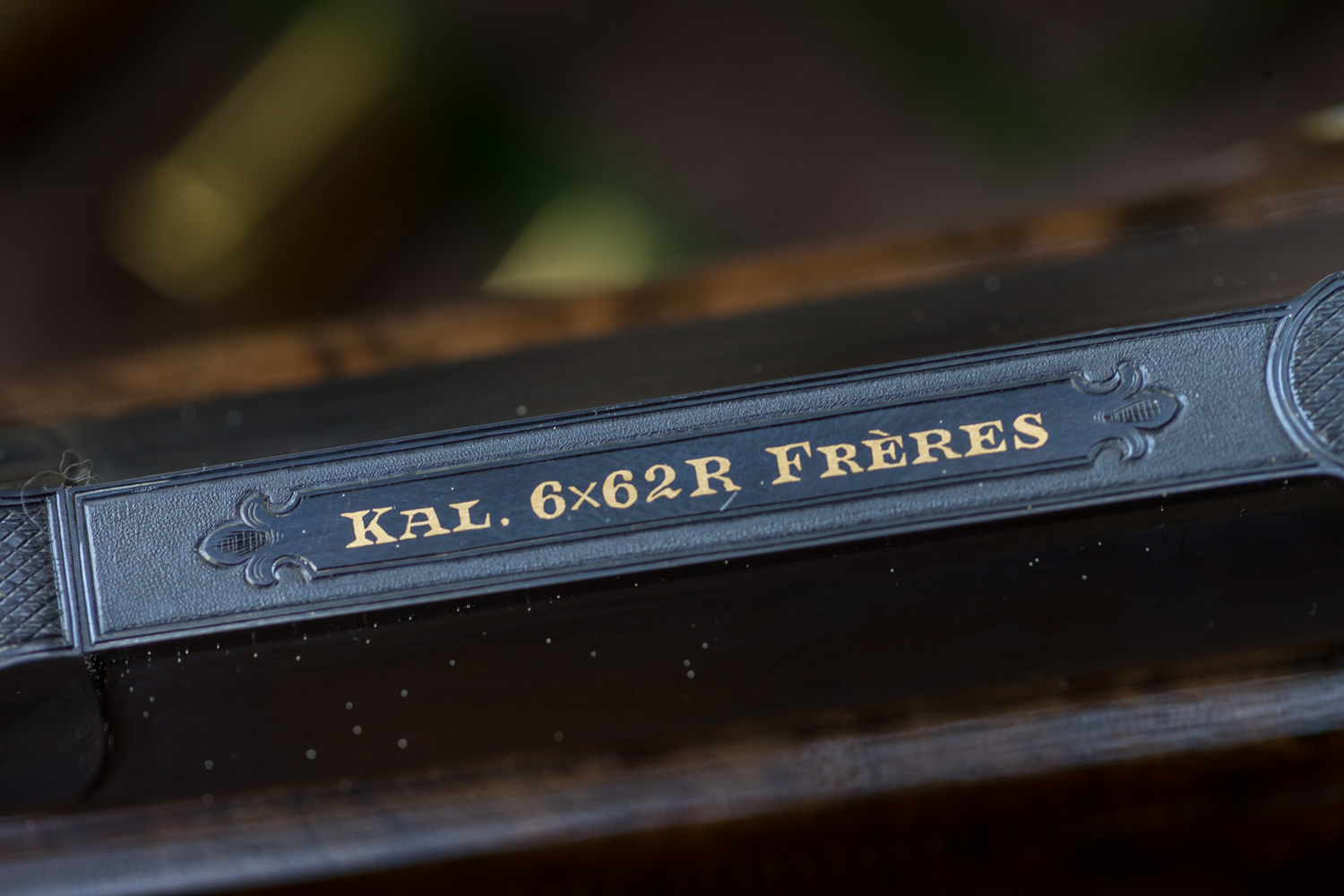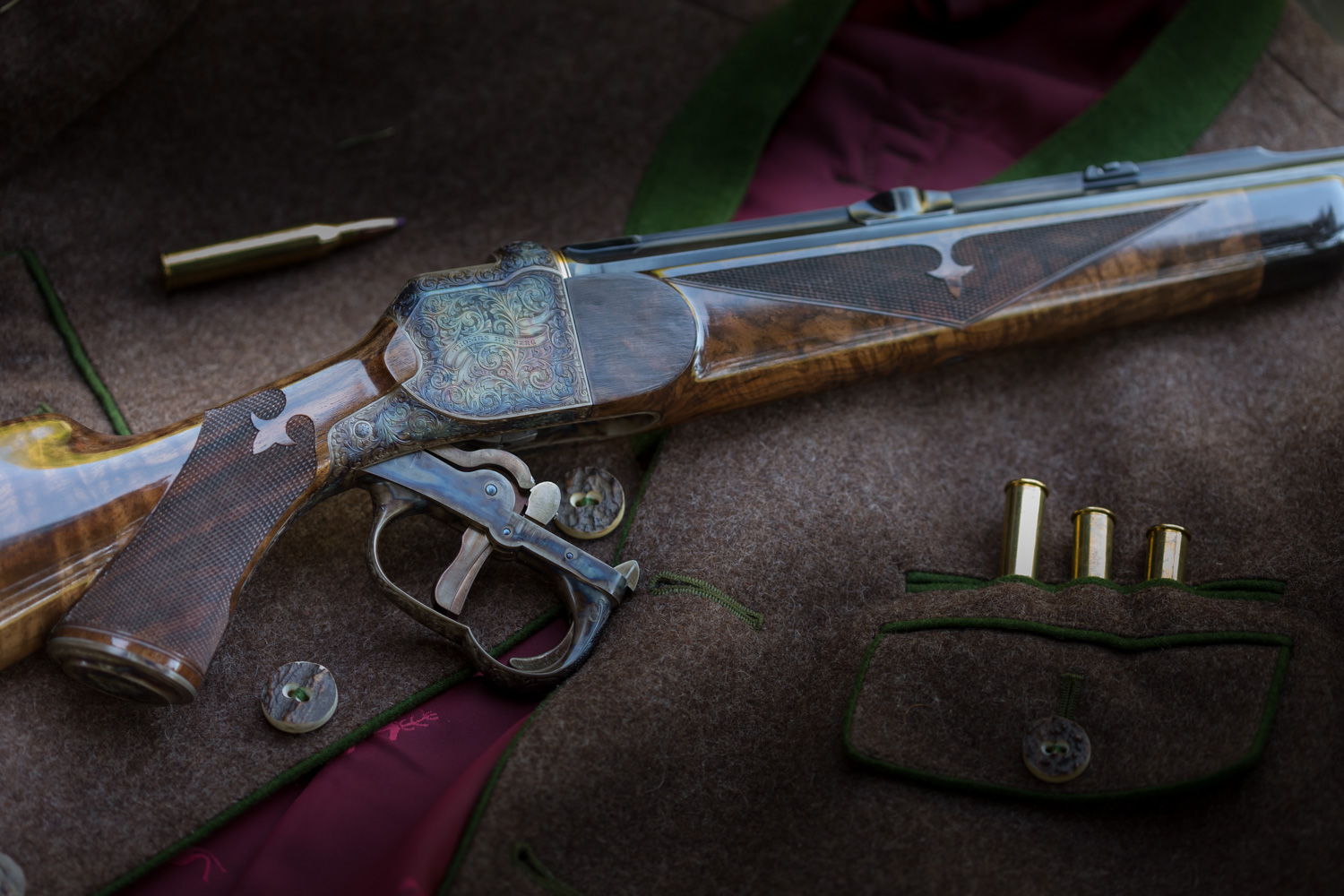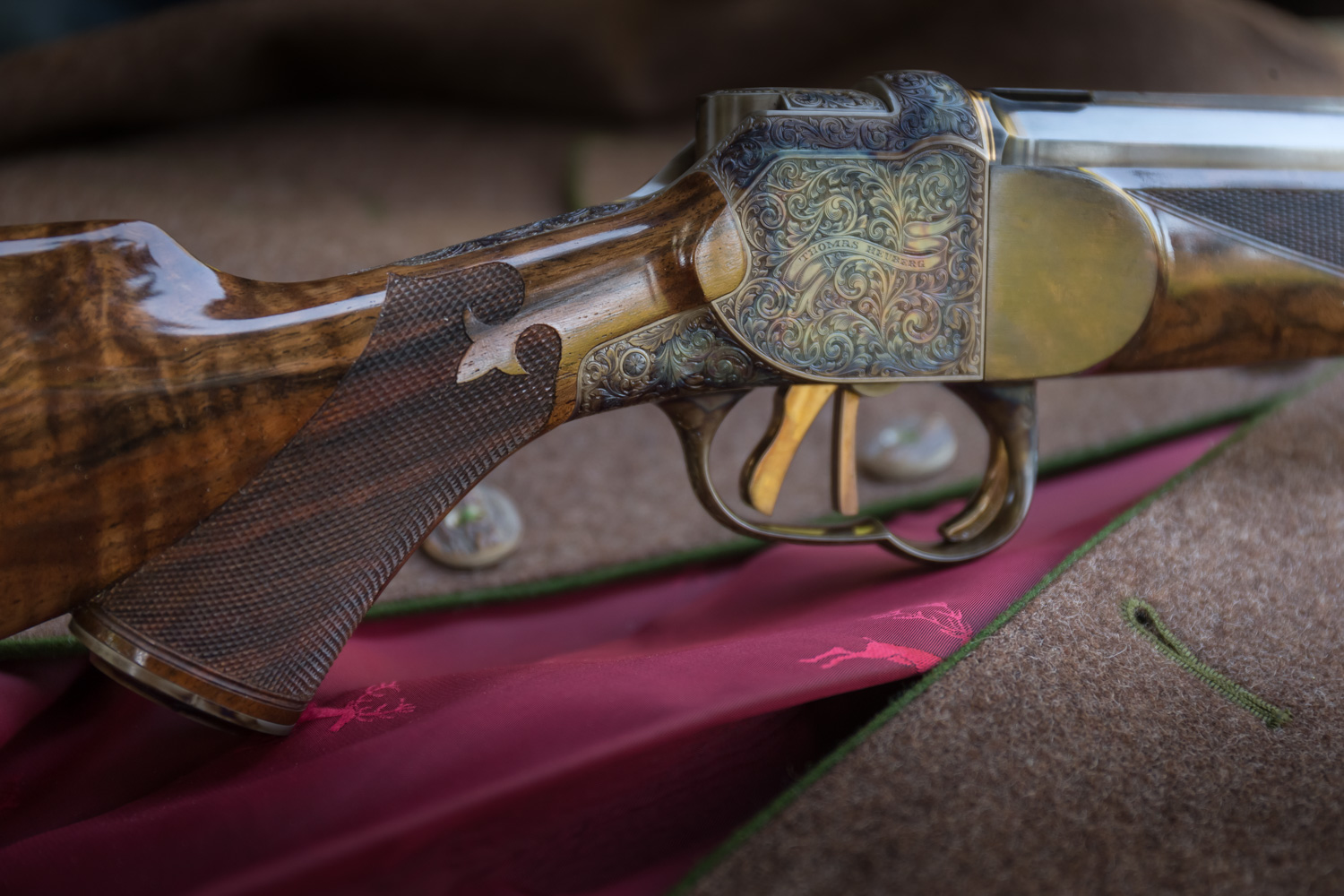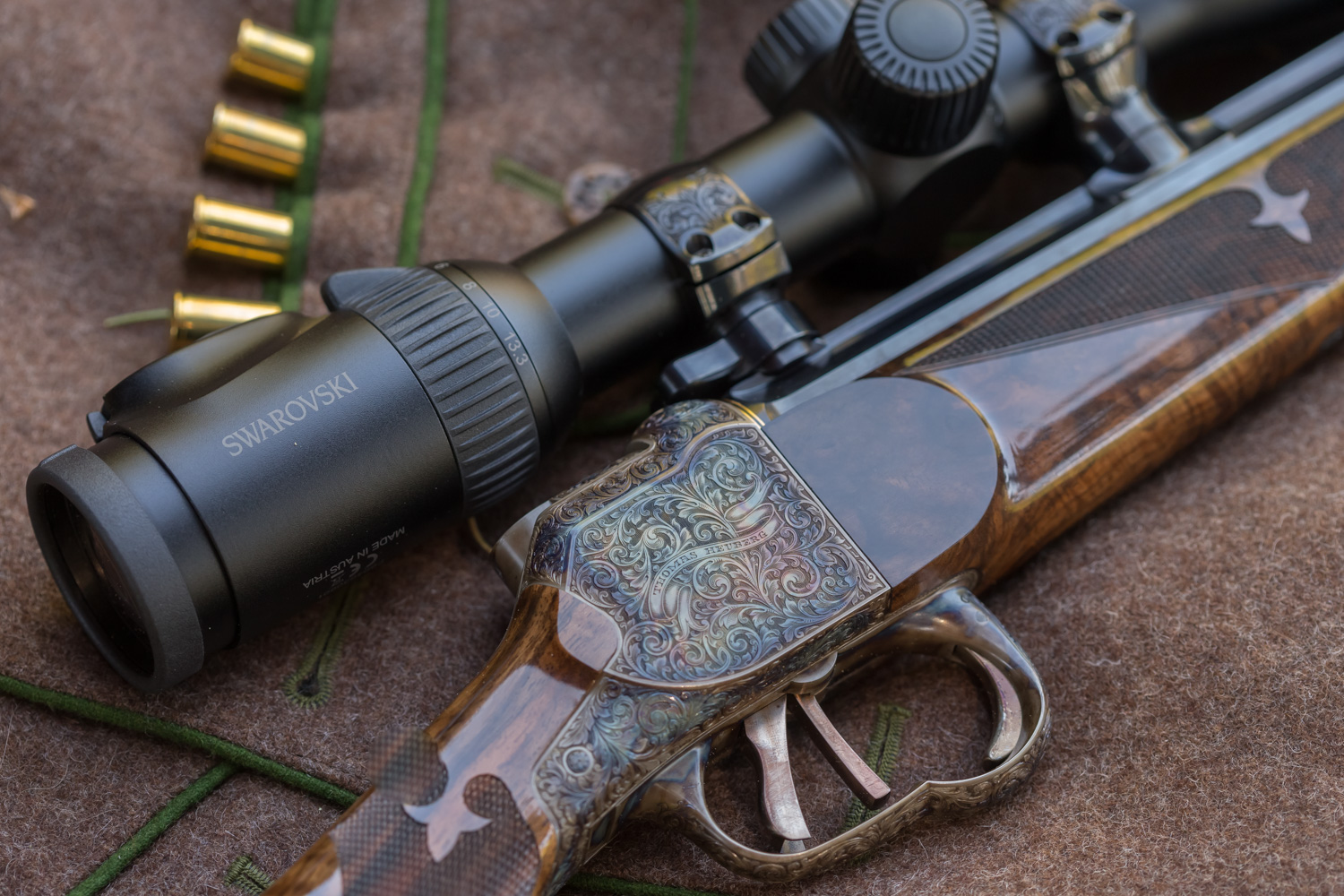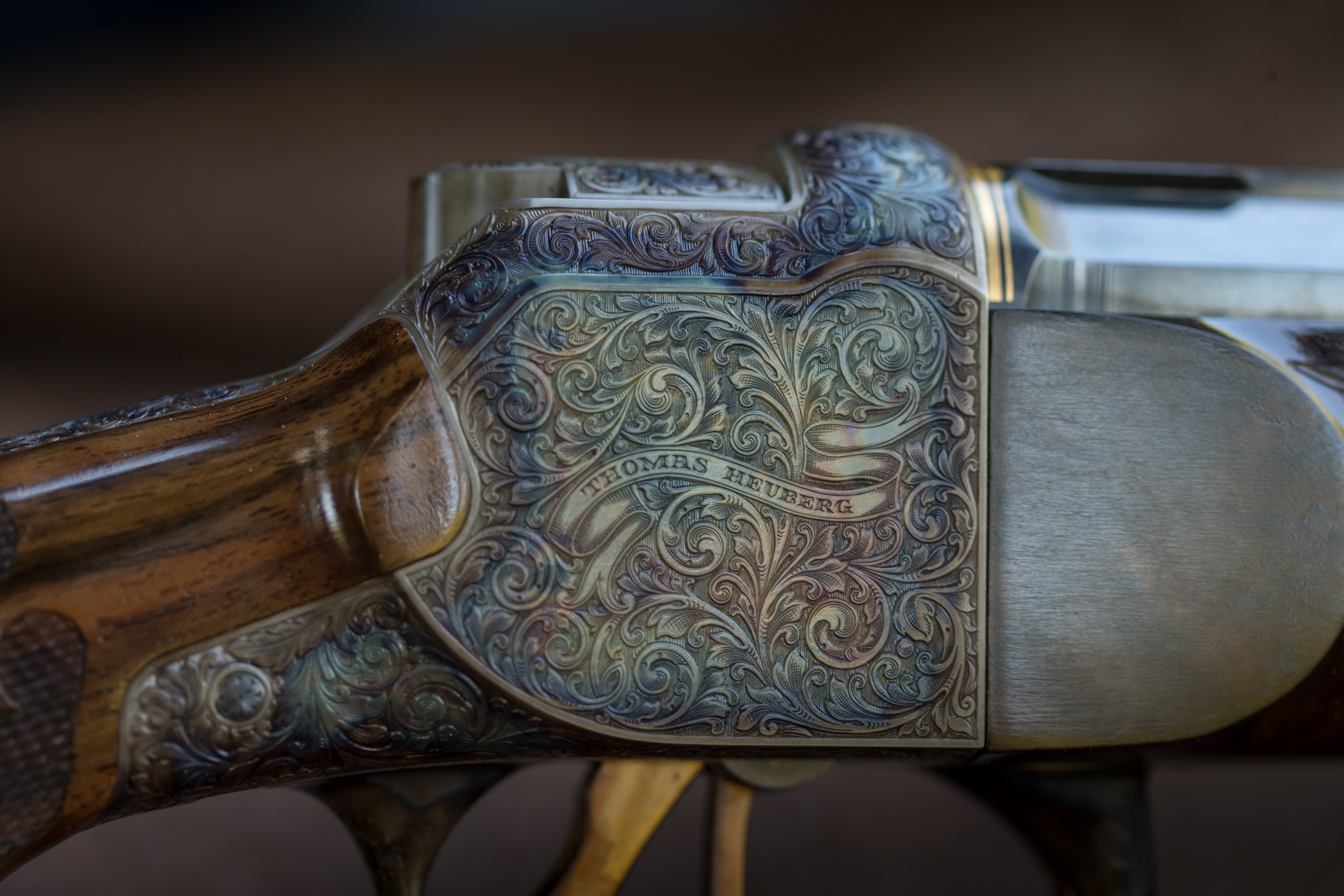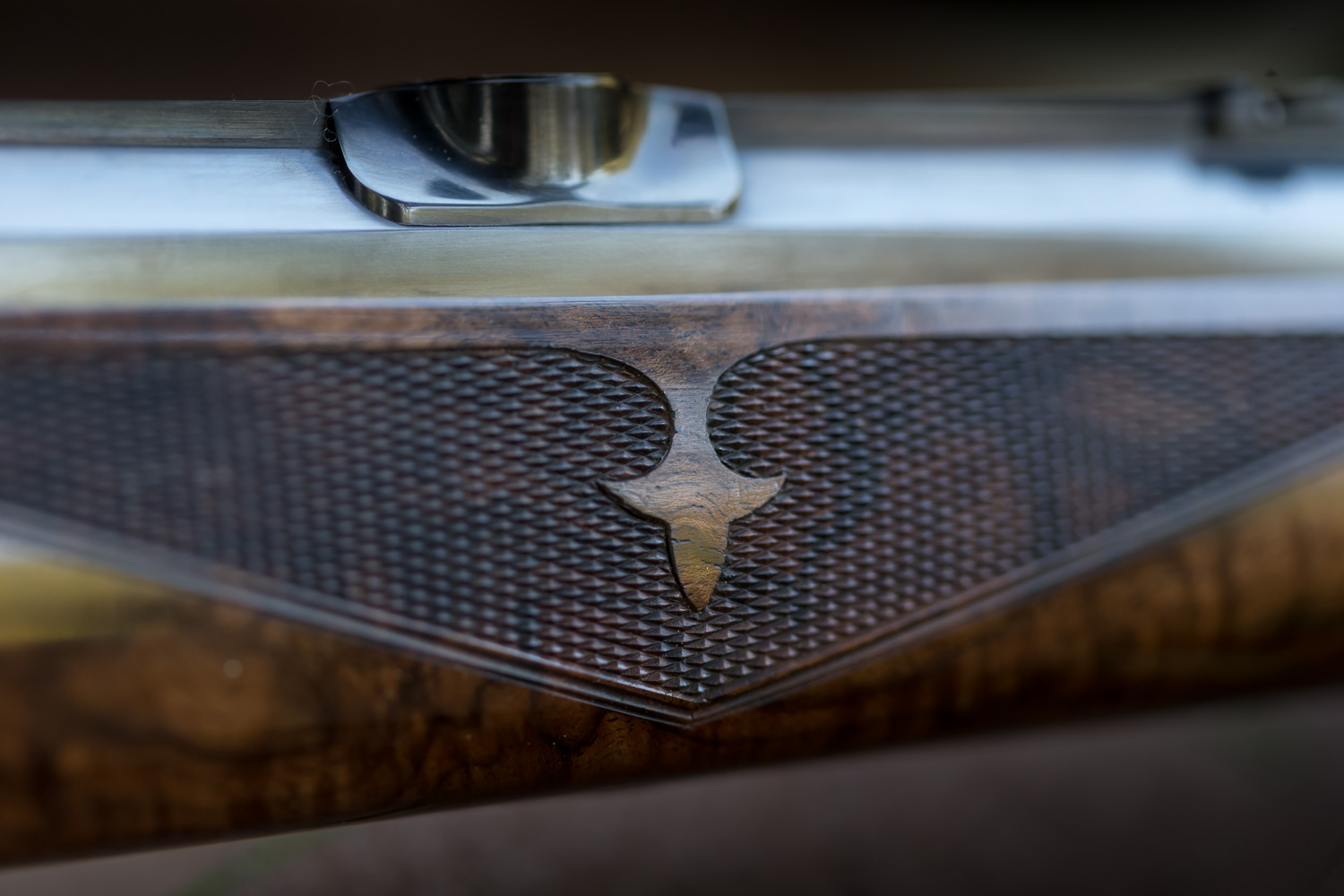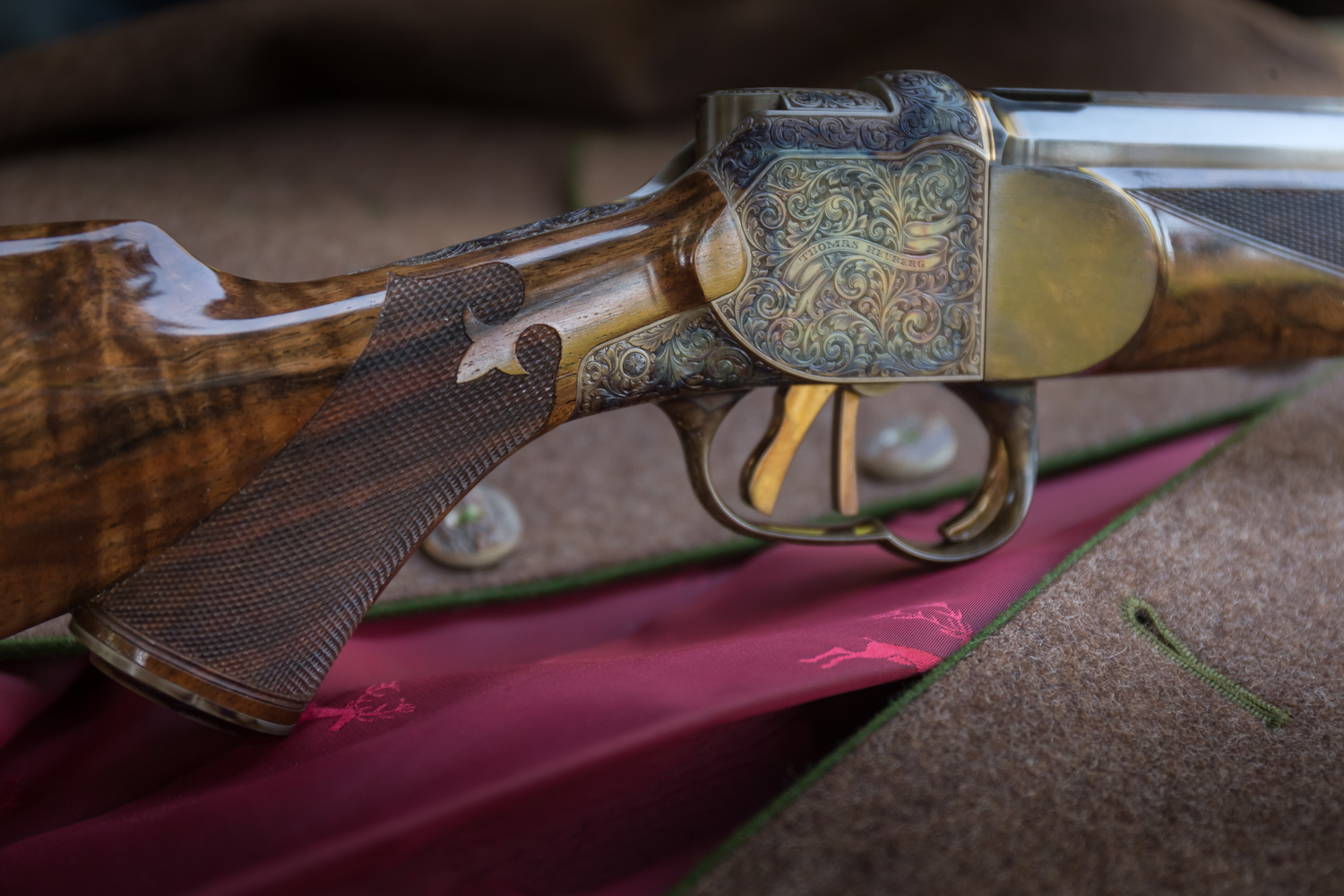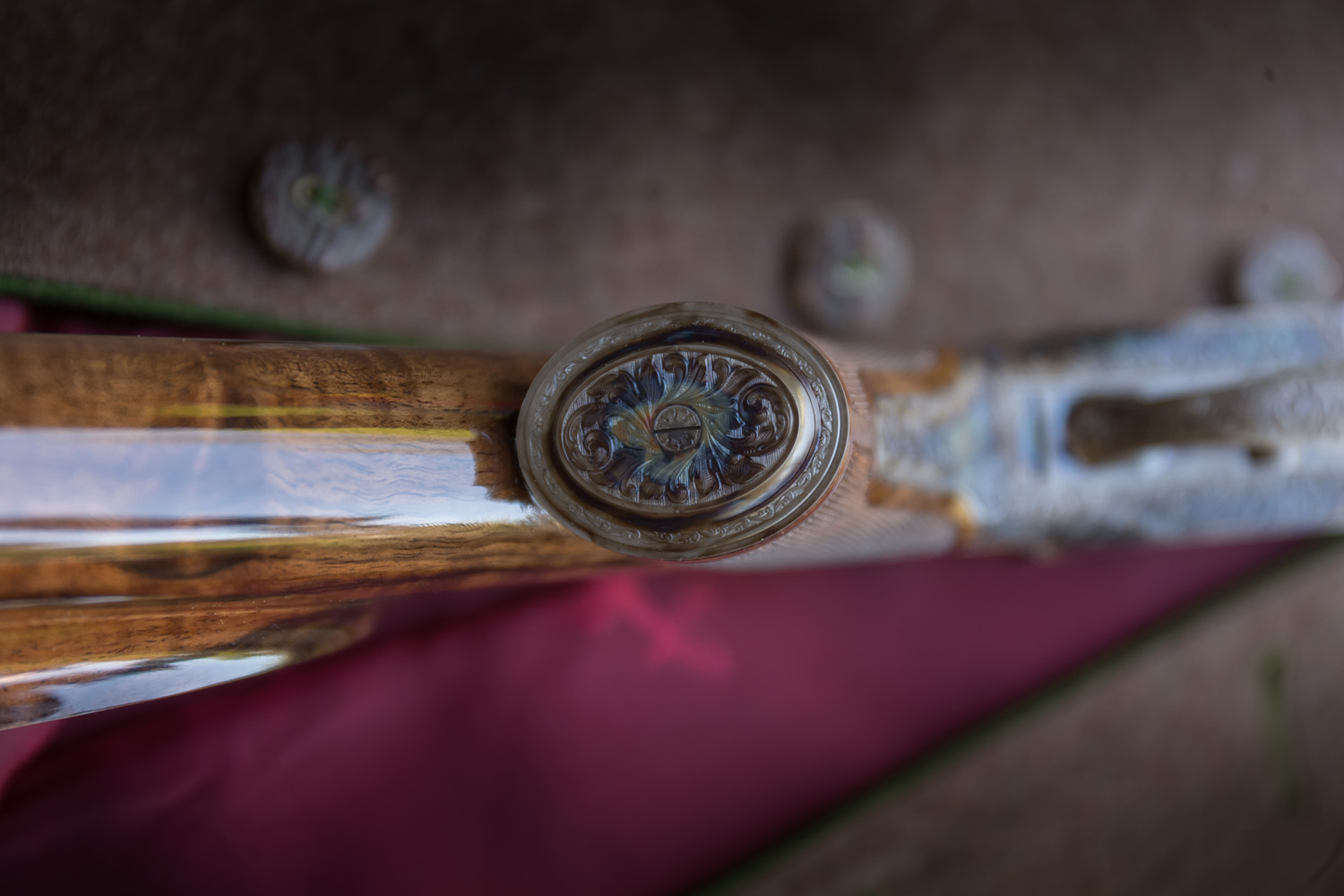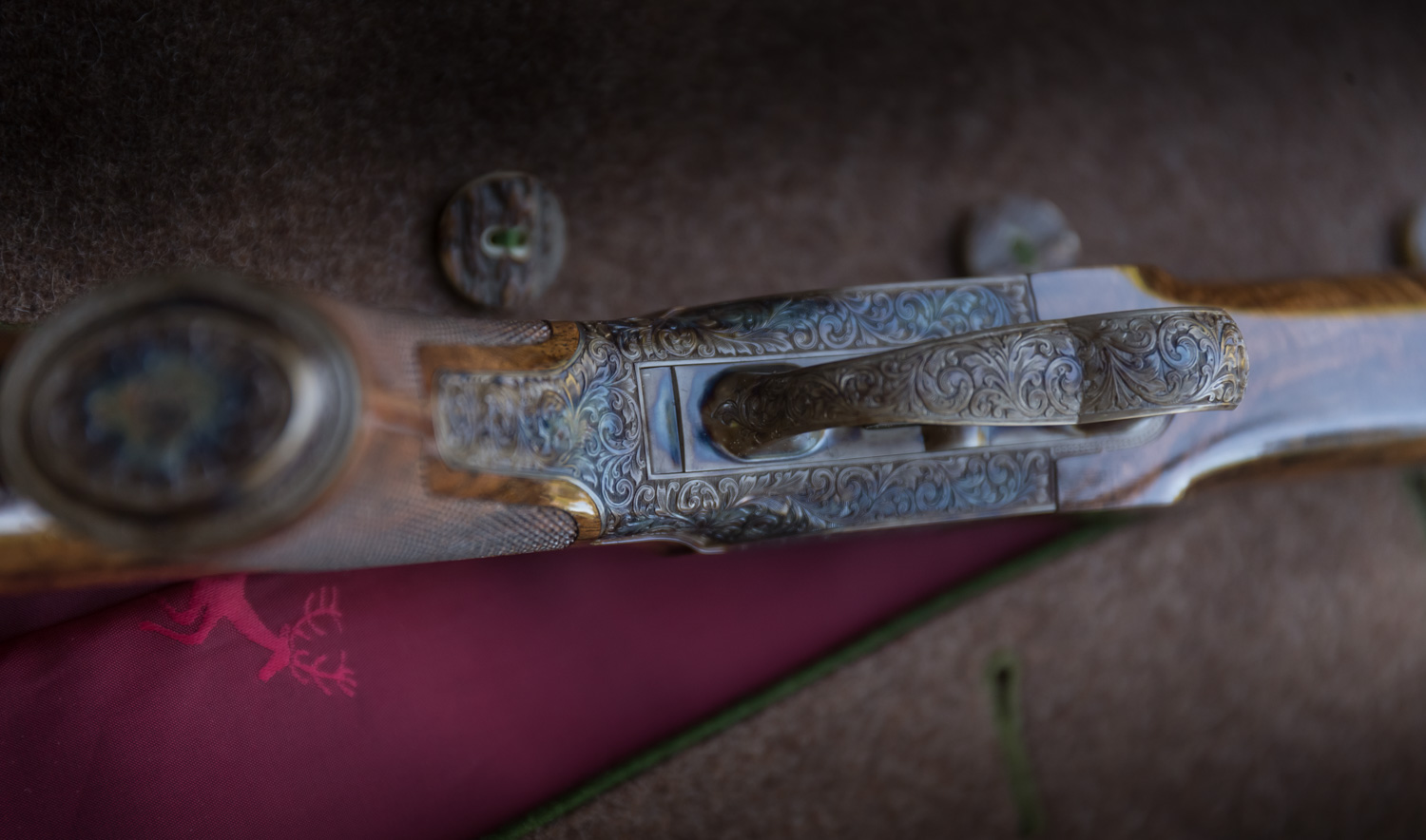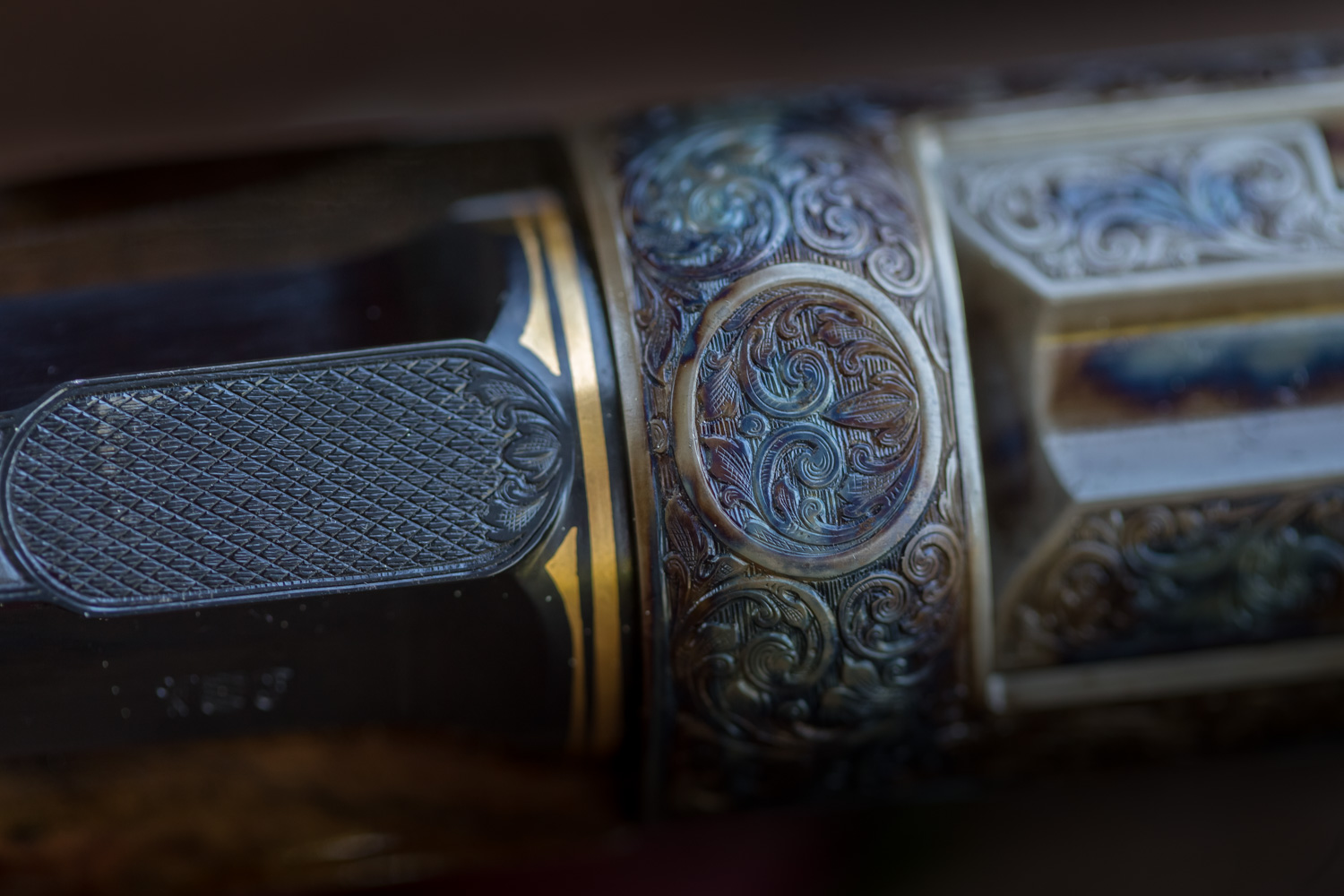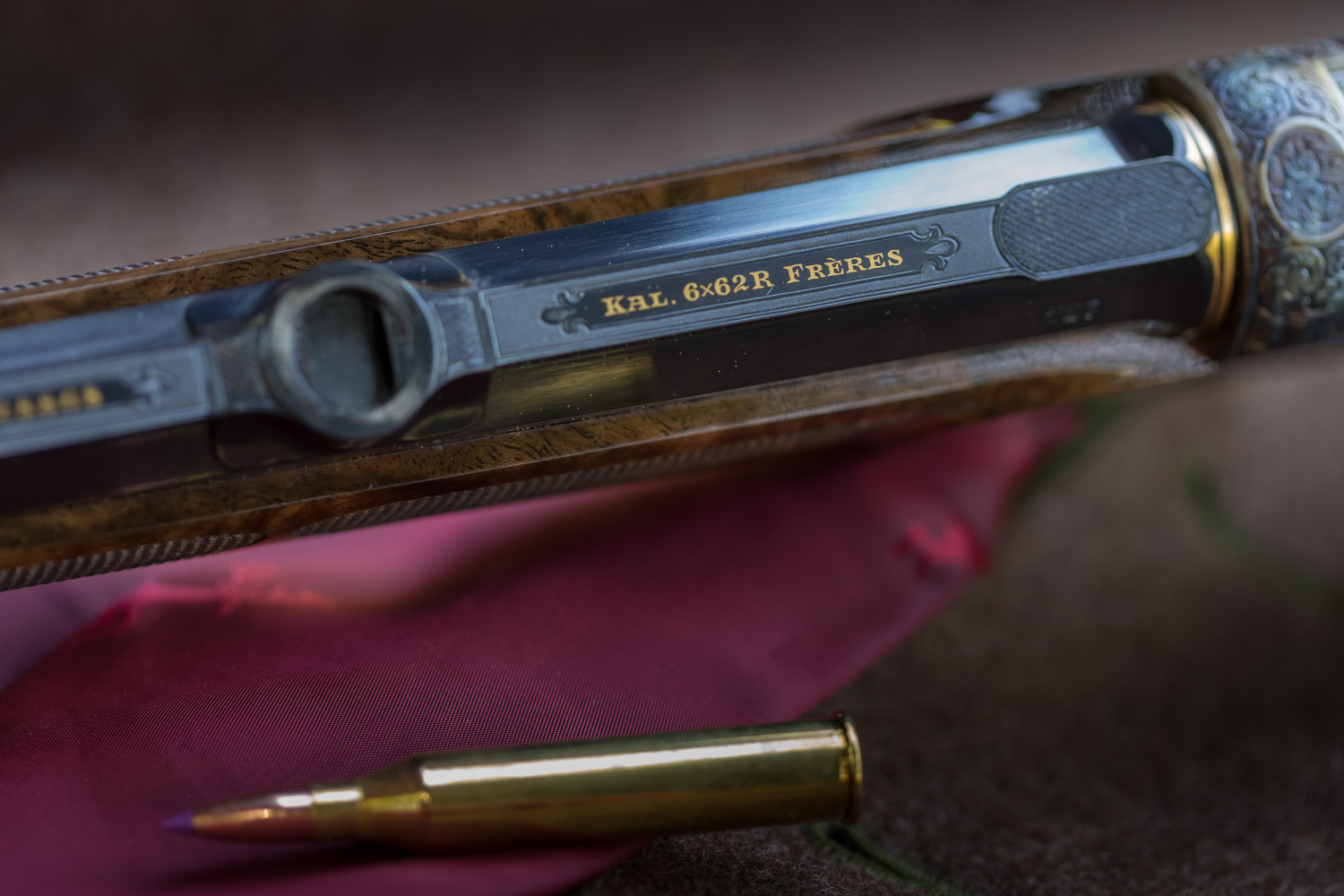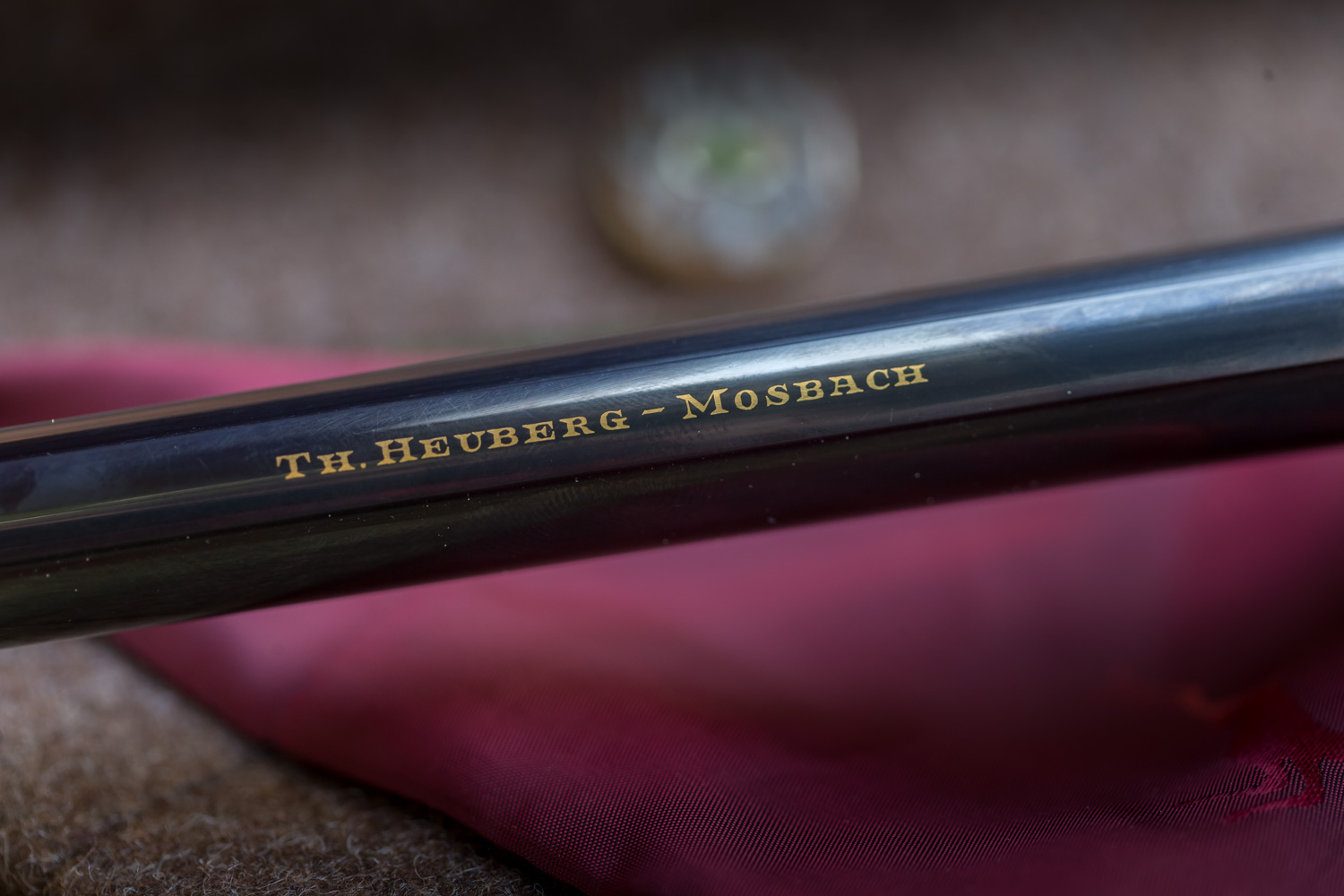One shot is enough
There will probably come a day when every hunter succumbs to the fascination of single-shot rifles. They have always had a special status among hunting rifles and are often characterized by their unusual design or sophisticated construction. At the same time, they enjoy a reputation as precise, reliable, robust and usually very beautiful rifles. All this still applies to the Heeren rifle to this day, even though the system is now a proud 142 years old.
How it all began
One of the most important inventions in the history of firearms was the metal cartridge developed in the sixties and seventies of the nineteenth century. This opened up the possibility of loading weapons from the rear and gave rise to numerous rifle breechblocks, most of which, however, quickly disappeared or failed to gain acceptance. Two breech designs were in direct competition: the cylinder breech and the block breech. After some back and forth, the cylinder breech finally prevailed for both military and hunting weapons. It became the mass-produced breechblock, while the block breechblock was relegated to a niche existence.
The Breechblock
Breechblocks all work according to the same principle: a solid metal block locks the barrel at the rear after the cartridge is inserted and supports the base of the cartridge during firing. Depending on whether the block is locked by rotation or vertical movement, a distinction is made between the rotating block breech (e.g. Martini) and the falling block breech (e.g. Fraser, Hagn, Heeren). The Heeren system is the shortest block system and also one of the oldest.
Arturo Count Heeren
Like so many others, the Heeren system is named after its inventor. Christian Arturo Juan Antonio Heeren y Massa was born in Hamburg on August 29, 1844, the fourth of seven children of the merchant Karl August Heeren and his Spanish wife Maria de los Dolores Ramona Angela Baldomera Massa y Grana. As the scion of a respected and wealthy shipping family, he had excellent international connections. He lived in Germany, France and Spain, married his wife Virginia Gonzalez de Candamo, a sister of the former president of Peru, in Paris and was finally naturalized in Spain. In 1895, King Alfonso XIII of Spain awarded him the title of Count of Heeren. Heeren died on March 11, 1920 in San Sebastian. The former Prussian officer and enthusiastic hunter was very interested in technology and registered several patents in Spain and France throughout his life. These involved shipbuilding, streetcar tracks and railroads. As early as July 11, 1880, however, the German Reich patent no. 13250 for the Heeren system was registered in his name and on March 29, 1881, it was also patented in the USA under the number 239496.
Nagel & Menz, k. k. Hofbüchsenmacher, Baden-Baden
The first system was designed by Heeren in collaboration with the company Nagel & Menz, k. k. Hofbüchsenmacher Baden-Baden and Strasbourg. At the time, Baden-Baden was a fashionable spa resort for the rich, powerful and beautiful from all over the world, and Nagel & Menz’s international clientele was correspondingly high-caliber, making it the ideal target group for the Heeren rifle. An early advertisement by the Baden-Baden gunsmiths reads:
“Block stalking rifle >>Heeren>> – the weapon for the modern gentleman hunter! “
Particular emphasis is placed on the elegance and handling of the rifle as well as its safe handling thanks to the then revolutionary hand cocking system. The exclusivity of this special weapon is also expressly pointed out:
“Apart from the many hunters and target shooters who use the Heeren rifle, you will see from the following brief excerpt of names what a great popularity it enjoys among the highest and best-known shooters.”
The following reads like a list from the Gotha, the handbook of the nobility. It ranges from the German emperor to the kings of Spain and Naples, several Russian emperors and grand princes, a number of grand dukes, dukes and princes and numerous European counts and barons as well as some military officers. The respective numbers of Heeren rifles purchased are also listed, starting with the German Emperor with just one order, followed by two from the Russian Emperor, Grand Duke Nicholas of Russia, three from Count Georg Erdödy and a Mr. Stollreuter from the Cape of Good Hope, through to Count Zdenko Kinsky, who alone was responsible for six rifles. The list comprises a total of sixty-seven names. The elevation of the inventor to the nobility was also precisely noted by Nagel & Menz in a later advertisement, as the „Pürsch-Büchse Blocksystem „Graf Heeren“ Patent.“ was now advertised.
Manufacture in Suhl
While the Heeren rifle was designed by the patent holder together with the company Nagel & Menz, it was not manufactured in Baden-Baden. Instead, the rifles were manufactured by the company Stephan Heym jun. rifle factory in Suhl (not identical with the Friedrich Wilhelm Heym rifle factory, also in Suhl), with whom they worked very closely. After the owner’s death, his son Max continued production until around 1938. In 1928, he had the name Heeren protected as a trademark by the Reich Patent Office in Berlin. An extension was granted in 1938 and ran until October 18, 1947. In 1938, Max Heym had already sold his company to Ernst Kerner & Co., also based in Suhl, for reasons of age. The Heerenbüchse was built there until well into the Second World War.
Once and today
After the patents expired, the Heerenbüchse was produced by various manufacturers after the war. In Switzerland, the Glaser company marketed the Heerenbüchse from 1947 with systems that were manufactured by the Omega watch factory and gained a legendary reputation. In Austria, various manufacturers took up the noble rifle. In Graz, for example, the Steiermärkische Waffenhaus of the August Orechowsky company produced them under the name Orea. The first improvements to the system were carried out there. In the 1960s, the Furtschegger company in Kufstein produced the Heerenbüchse, also with some improvements. It also supplied these systems to the company Outschar in Ferlach, which in turn built its own systems from 1976. Hartmann & Weiss in Hamburg has also been manufacturing the classic Heerenbüchse since the 1970s. In addition, one or two other gunsmiths have certainly built weapons with the Heeren system. The block rifle has never been a mass-produced item, but has always remained something special.
Heeren rifle Thomas Heuberg
Thomas Heuberg’s rifle from the small Neckar town of Mosbach is also something very special. At the customer’s request, the rifle was built in the unusual caliber 6x62R Frères, which is nevertheless suitable for long-range shooting. The barrel, which changes from octagonal to round, was manufactured on the company’s own machines as an integral barrel from a single block of steel. Incidentally, this is a unique selling point of Heuberg’s gunsmiths, who manufacture not only the barrels but all metal parts themselves. Thomas Heuberg attaches great importance to independence and control over the entire production process. He consciously accepts the naturally associated capacity limits and guarantees the highest quality and exclusivity of his weapons.
Modified system
The rifle largely corresponds to the original, as it was designed by Heeren and Nagel & Menz at the time. However, Heuberg also made some technical changes. These concern the trigger notch and the cocking notch as well as the firing pin guide and mounting. He also significantly improved the connection between the action and stock. In the original Heeren rifle, the action was attached to the stock with only one cross screw. This often proved to be problematic and was then improved with additional screws in the trigger plate. Heuberg has fitted an axial screw through the entire buttstock due to the closed rear action. This allows the action to be pulled into the stock even after many years if necessary.
Unmistakable
A striking and at the same time characteristic feature of every Heeren rifle is the uniquely shaped trigger unit with the double trigger guard. The strongly bulging, slightly pretzel-shaped trigger guard also serves as a locking lever. By pressing the front trigger, the rear trigger guard swings down, the bolt opens by lowering the block, the hammer is pre-cocked but rests in a detent that cannot be released by the trigger, and a cartridge can be inserted into the barrel. If you now pull the rear trigger forward immediately before firing, as with a back-action rifle, the weapon is cocked and chambered. If you fail to fire, you can uncock or fully decock the weapon by pressing the two triggers together. Important to know: The rear “trigger” is not a trigger but the hammer. It is therefore similar to the hammer on a cocked gun, with the difference that it is not so exposed, but is well protected in the trigger guard, which means more safety.
Noble elegance
“Great elegance with an original, simple and very solid construction is combined with brevity and lightness in this system.”
To this day, the Heuberg rifle cannot be described more aptly than in this Nagel & Menz advertisement. The Heuberg rifle also impresses with its harmonious proportions. With a barrel length of 60 cm, it has an overall length of only 98 cm. The weight is only 2.8 kg without scope. This makes it practically the same as the original. Speaking of riflescopes: a Swarowski Z8i 1.7-13.3 x 42 P was fitted. The slim scope harmonizes very well with the rifle and underlines the excellent handling of the rifle, which is clearly intended for stalking, also in alpine areas, and the assembly is – as you might have guessed – complete with all parts and the locking cam action from Heuberg’s own production.
Stock and engraving
However, the Heuberg rifle was not created entirely without the help of others. For the stock and engraving, Heuberg called on the skills of two masters of their trade. Heuberg brought the stock and action together, i.e. the metal and wood fittings, himself. Master gunsmith Sebastian Wlodarz, a friend of his, then made the stock from beautifully grained walnut wood. With a very special feel for the right shape and proportions, he created a stock that harmonized perfectly with the gun. The perfectly cut checkering with the eye-catching lilies requested by the customer and the fine high-gloss finish underline the individual character of this custom rifle. The rifle’s elegant appearance is crowned by a fantastic engraving. Floral, curved ornaments on a recessed background extend across the entire system and give the color-hardened steel a very special flair. Engraver Anja Dammenhayn based this work on an engraving by master engraver Heinz Funk, also at the customer’s request. Masterful in its proportions and execution, it impressively underlines the classic, characterful appearance of the weapon.
A total work of art
The Heeren rifle by Thomas Heuberg impressively demonstrates how timeless hunting rifles can be. In a variation of the Nagel & Menz advertising slogan, one could say:
“Block-Pirschbüchse >>Heeren>> – the weapon for the lover of individual hunting weapons!
The result is a single-shot top gun based on a classic design. A total work of art that not only looks wonderful, but also functions perfectly: On collection, the customer brought five different types of ammunition from various manufacturers for test firing. All five types were no more than 4 cm apart. Simply fascinating!
This article first appeared in the German hunting magazine “HALALI”.

